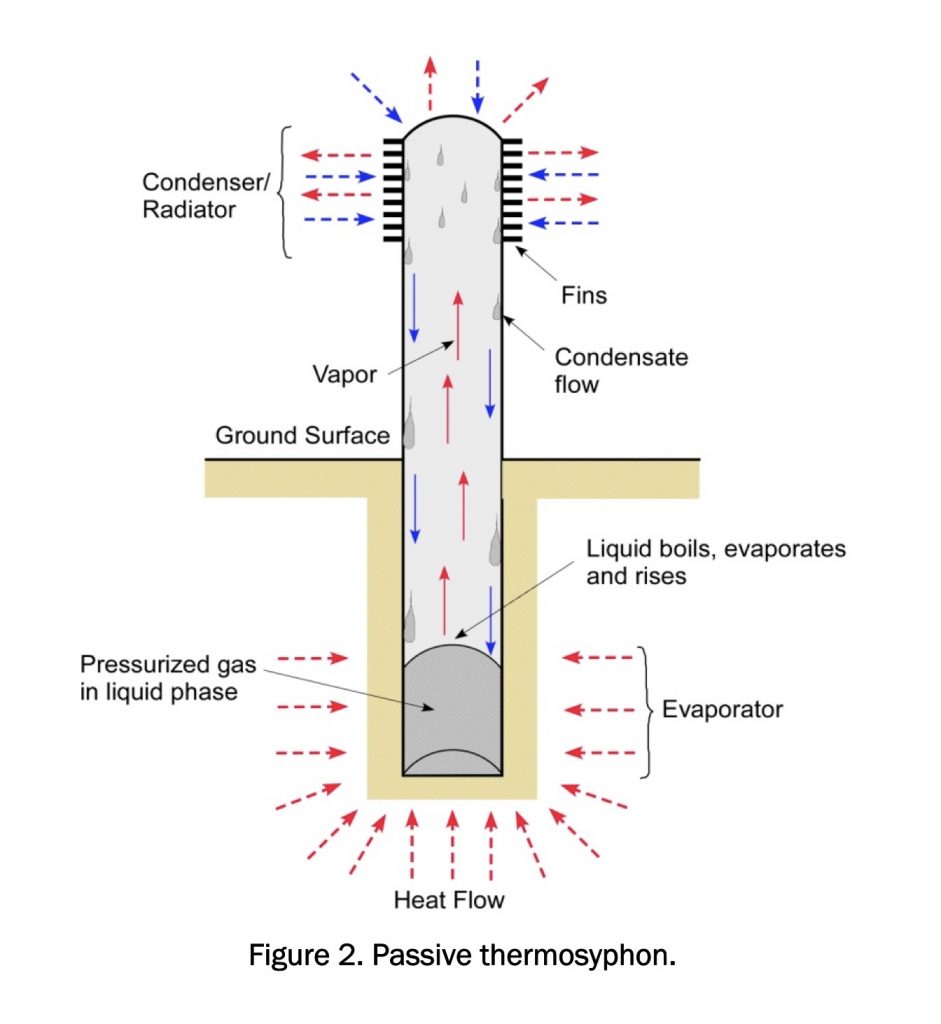Hey, don’t worry about climate change. Let global warming go unchecked, and Mother Nature’s growing hot flashes will simply shut down the fossil-fuel industry for us.
Up in Alaska, the permafrost is thawing, putting the Trans-Alaska Pipeline at risk of breaking:
The slope of permafrost where an 810-foot section of pipeline is secured has started to shift as it thaws, causing several of the braces holding up the pipeline to tilt and bend, according to an analysis by the Alaska Department of Natural Resources.
…This appears to be the first instance that the pipeline supports have been damaged by “slope creep” caused by thawing permafrost, records and interviews with officials involved with managing the pipeline show.
…Any spill from the 48-inch diameter pipeline that flows with an average of 20 million gallons of oil a day, and the resulting clean-up activity, could accelerate the thawing of the permafrost even more, environmental experts said [David Hasemyer, “Thawing Permafrost Has Damaged the Trans-Alaska Pipeline and Poses an Ongoing Threat,” Inside Climate News, 2021.07.11].
To firm up the not-so-permafrost, engineers are drilling cooling tubes into the ground beneath the pipeline:
To safeguard the pipeline from possible collapse, the pipeline operator, Alyeska Pipeline Service Company, was granted permission earlier this year by the natural resources department to construct the passive cooling system to arrest the thaw of permafrost that is essential to locking the supports in the ground and keeping the slope from slumping or sliding.
Alyeska is installing approximately 100 free-standing thermosyphons 40 to 60 feet into the ground. Construction is expected to take 120 days and will also include a three-foot layer of insulating wood chips atop the permafrost [Hasemyer, 2021.07.11].

Thermosyphons aren’t new: 120,000 thermosyphons were built into the Trans-Alaska Pipeline’s supports in the 1970s. As passive units, they don’t burn fuel like an air conditioner or fridge, so they shouldn’t appreciably accelerate climate change. But they won’t work during the current mild summer in Alaska; they only transfer heat out of the permafrost when the air is colder than the underground. And today at the site of the new thermosyphon project, the temperature appears to be in the 60s Fahrenheit.
So we can keep trying to emergency engineer the ground we’re melting so we can keep pumping the fuel we’re burning that’s causing the melting, or we could reduce our burning of that fuel and our heating of the planet. Hmmm… which sounds simpler to you?
Thats so concerning and overwhelming. Climate change is real. My first cousins live in Alaska, their dad was born there. They are fishermen and climate change effects have impacted them somewhat. Here in SD life goes on. We have drought as usual but moreso this year.
I thought, on Republican Earth 2, the fact that it still snows in northern AK was proof positive that global warming/climate change was a hoax, right Senator Imhoff? The times, they are a changin’!
Makes me want to run right out and build more pipelines. Permafrost can’t hurt them all, can it? Alaska is, for all intents and purposes, in an active earthquake zone. Even Bristol Bay where the world’s largest copper/gold mine was being planned which would have disrupted the world’s largest remaining salmon runs and endangers all five species of salmon. Not to mention the livelihood of the First Nations who depend on the salmon for their way of life.
Although it has been cancelled (hopefully forever) owners claimed they could mine salmon streams down 300 feet to bedrock, extract all the minerals and fifty years from now restore the area to its pristine state. Billions of gallons of toxic wastewater were to be stored behind 700 feet high earthen berms guaranteed not to leak or fail….in an active earthquake zone. All that wastewater would empty into Bristol Bay killing off any remaining fish.
Construct pipelines over frozen ground! That’s engineering, the Exxon way!
Construct pipelines under the nation’s largest freshwater teserviour! That’s engineering! The Exxon way!
Construct oil pipelines in the Yellowstone River! That’s engineering! The Exxon way!
All of Black-hills rural residences rely on septic systems, upstream of Rapid Creek, Rapid City’s drinking water source. That’s engineering, the Exxon way!
Capitalist “science”.